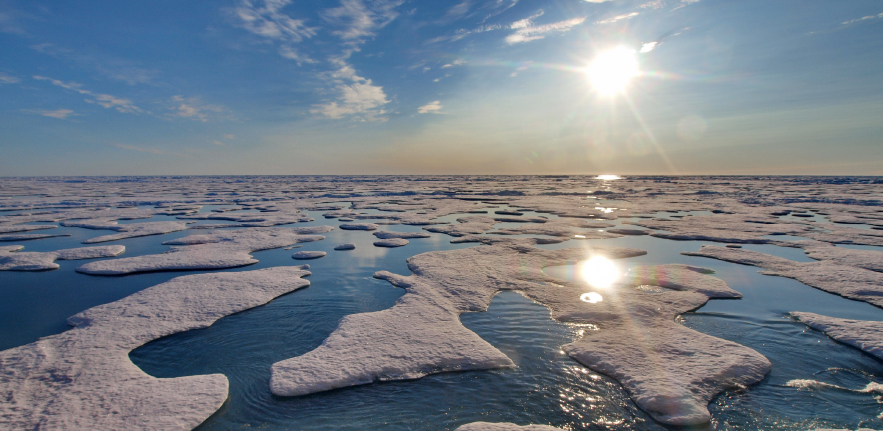
Submitted by Dr C.M. Martin-Jones on Fri, 30/04/2021 - 11:15
Geologists at the University of Cambridge have revealed how changes in our Earth’s interior can cause massive upheaval of our planet’s surface over millions of years, profoundly influencing sea levels and the sensitivity of ice sheets to climate change.
Their findings, published in Nature Communications earlier this month and presented at this year’s vEGU21, show that expansive topographic highs -- stretching for thousands of kilometres -- occur above regions where the mantle is anomalously hot, and rests on a thinner tectonic plate.
The uplift of these enormous swathes of land -- often extending across entire continents -- can significantly affect erosion rates and climate over time; redirecting ocean currents and causing coastlines to rise out of the sea.
“There are currently very few viable observational constraints on these upheaval events back in time,” said lead-author Dr Patrick Ball, “Our findings show that extinct volcanoes are an important indicator of ancient mantle temperature and flow.”
Temperature differences in Earth’s mantle cause it to churn slowly like a conveyor, as enormous currents act to remove heat from our planet’s interior. The ebb and flow of these convection currents can push areas of Earth’s surface up, or drag them down, by as much as one kilometre every few million years – forming topography anomalies known as ‘dynamic topography’.
The team, which also involved scientists from Australian National University and the University of Oxford, developed a novel method for taking the temperature of Earth’s mantle, by reading the chemical make-up of extinct ‘intraplate’ volcanoes - those located far from the edges of tectonic plates where eruptions and earthquakes typically occur.
Their findings could improve the accuracy of past sea-level reconstructions, which are currently based on comparisons between the elevation of once-submerged marine fossils and the height of present-day sea-level, and do not consider how mantle flow influences Earth’s surface through time. Observational data for sea level change only exists for the last century, so long term geological records of change are needed to fully understand how ice sheets and sea level may respond under future climate change scenarios.
“Exposed coral reef deposits used in sea-level reconstructions may not have been exposed just by falling sea level – they may have been pushed out of the sea by buoyant, hot mantle beneath,” said Ball, who undertook the research whilst a PhD student at Cambridge Earth Sciences and later a postdoctoral researcher at ANU, “Ours is the first study to suggest that the chemistry of ancient lavas may help scientists make more accurate sea-level measurements by disentangling the effects of real sea level change from mantle temperature variations.”
“Lava chemistry changes as a function of mantle temperature in a predictable way. Therefore, since lava flows from ancient intraplate volcanic eruptions are preserved within the rock record, we can use their chemistry as an indicator of upper mantle temperatures back in time," said Ball.
By combining temperature data from ancient lava flows with seismic tomography – an imaging technique that uses seismic waves to create models and 3D images of the Earth’s interior – the team were able to understand how mantle temperature varies with the thickness of overlying tectonic plates and, in turn, how they both govern dynamic topography.
They found that approximately 90% of intraplate volcanoes occur over areas where the tectonic plate is roughly 50% thinner than expected, and the mantle beneath the plate is anomalously hot.
They noted that this thinning, coupled with elevated temperatures could cause entire regions to be uplifted over millions of years. “We’d expect Earth’s surface to spring up where the plate was thinner and underlying mantle warmer, and we were able to confirm this theory in areas of Patagonia, the western USA and eastern coast of Australia. Here, once-submerged marine deposits like fossil corals are perched up in the air: hundreds of metres above current sea level and at a height that corresponds to the plates beneath being thinner than expected,” said Professor Nicky White, from Cambridge Earth Sciences.
The origin of these intraplate volcanoes has baffled geologists for decades, “Most volcanoes occur at plate boundaries but there are many enigmatic volcanoes located far from these traditionally active areas, where they shouldn’t be, and that’s really puzzled scientists. We’ve not only been able to reveal the ingredients needed for intraplate volcanism – a hot mantle and thin plate -- but show they are important indicators of convective flow over unthinkably long timescales,” said White.
Ball, P., White, N., Maclennan, J., and Stephenson, S.: Using Volcanic Geochemistry and Seismic Tomography to Refine Global Models of Mantle Temperature and Plate Thickness, EGU General Assembly 2021, online, 19–30 Apr 2021, EGU21-3572, https://doi.org/10.5194/egusphere-egu21-3572, 2021.
Ball, P. W., White, N. J., Maclennan, J., & Stephenson, S. N. (2021). Global influence of mantle temperature and plate thickness on intraplate volcanism. Nature Communications, 12(1), 1-13.
Header image via EGU Immageo, CC BY-ND 3.0: Michael Tjernström (University of Sweden). Ponds of melted freshwater (snow) on top of sea ice in the Arctic in summer. Also note the haze in the distance; such haze is rare in the Arctic and appears here because of the relative proximity to land in combination with offshore winds.
